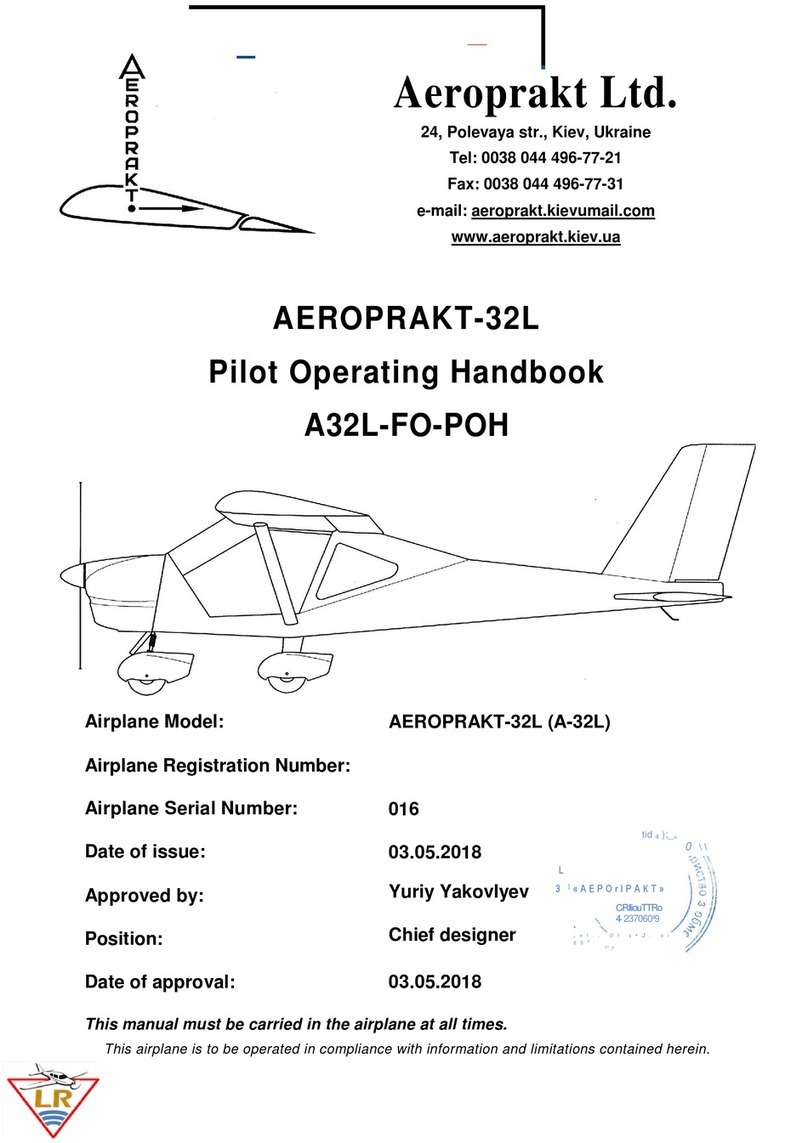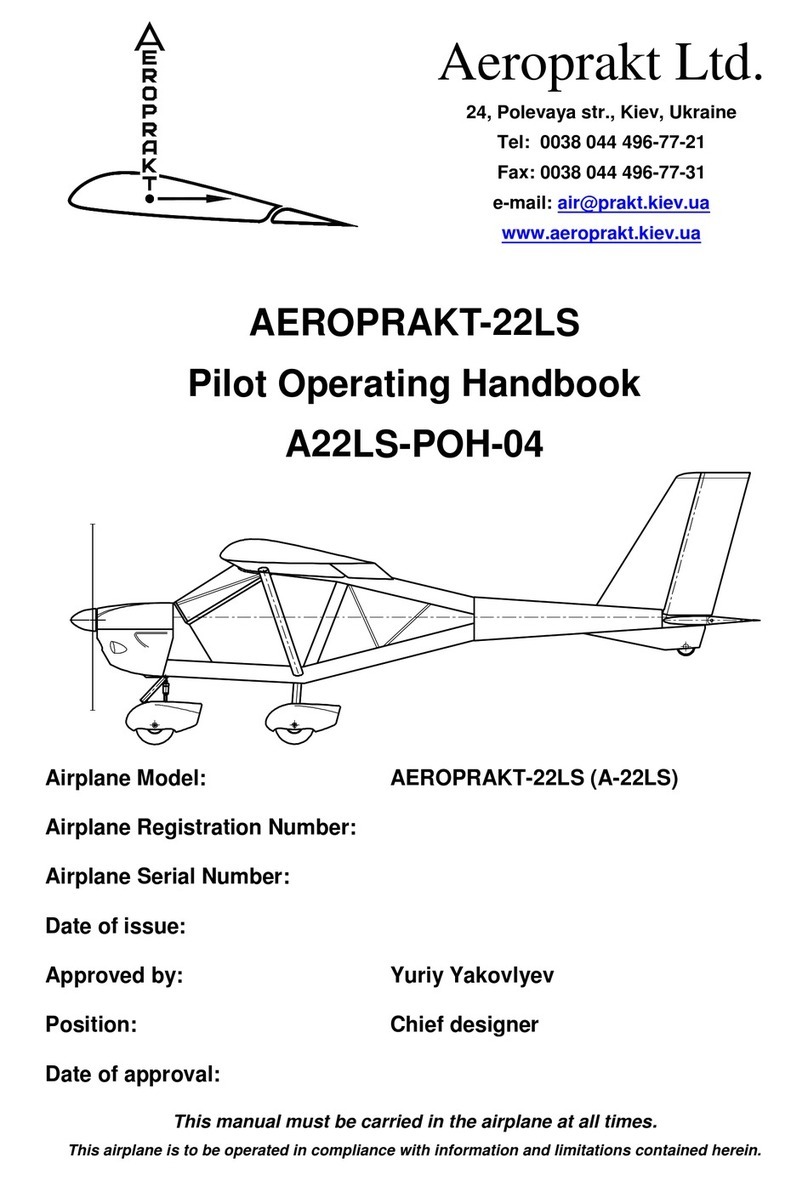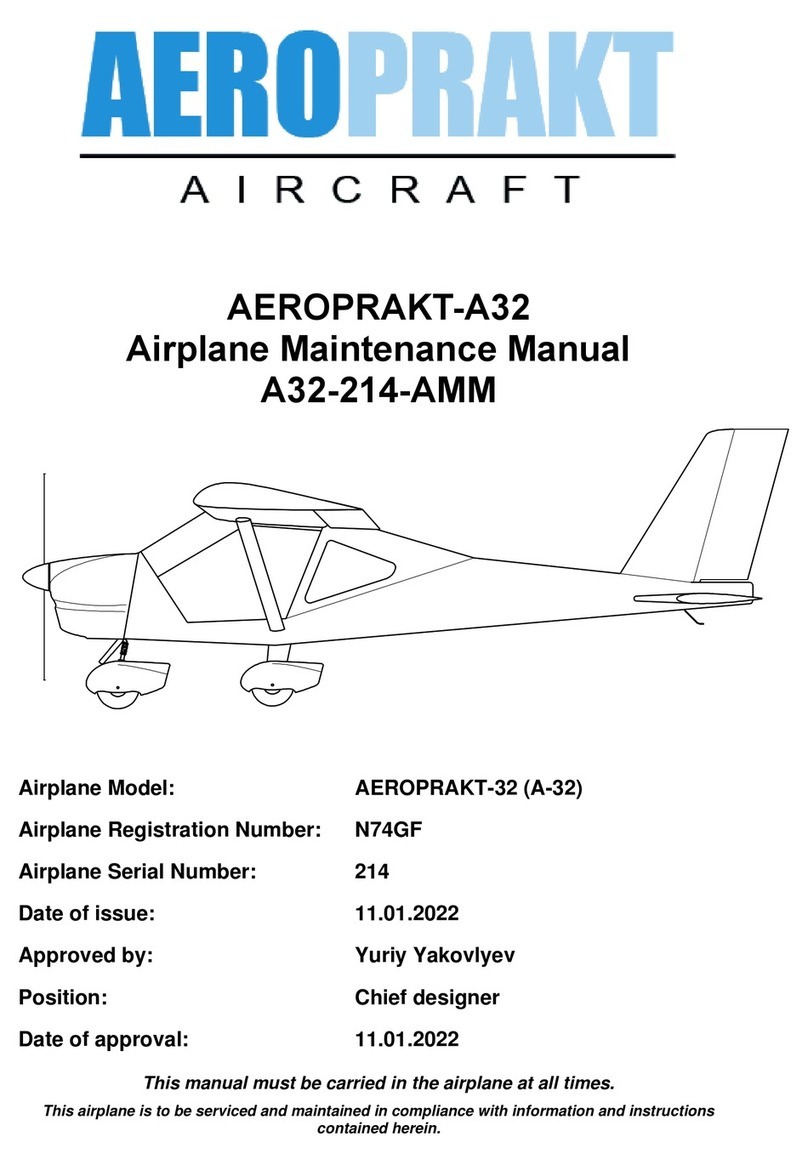AEROPRAKT N226AM Owner's manual

AEROPRAKT-22LS
Pilot Operating Handbook
A22LS-POH-04
Airplane Model: AEROPRAKT-22LS (A-22LS)
Airplane Registration Number: N226AM
Airplane Serial Number: #415
Date of issue: 08.04.2021
Approved by: Yuriy Yakovlyev
Position: Chief designer
Date of approval: 08.04.2021
This manual must be carried in the airplane at all times.
This airplane is to be operated in compliance with information and limitations contained herein.

AEROPRAKT-22LS Pilot Operating Handbook A22LS-POH-04
2
RECORD OF MANUAL REVISIONS
No part of this manual may be reproduced or changed in any manner without a written
consent of the Manufacturer.
Any revision of the present manual, except actual weighing data, must be recorded in the
following table according to information from the Manufacturer.
New or amended text in the revised pages will be indicated by a black vertical line on the
left hand margin, and the Revision No. and the date will be shown on the bottom left hand
side of the page.
Rev. No.
Affected
Section
Affected
Pages
Date
Approval
Date
Date
Inserted
Signature

AEROPRAKT-22LS Pilot Operating Handbook A22LS-POH-04
3
Table of contents
1Introduction.................................................................................................................5
2General information....................................................................................................6
2.1 General description of the airplane ........................................................................6
2.2 Airplane specifications ...........................................................................................6
3Limitations...................................................................................................................7
3.1 Airspeeds and Airspeed Indicator markings...........................................................7
3.2 Service ceiling........................................................................................................8
3.3 Maneuvering load factors.......................................................................................8
3.4 Approved maneuvers.............................................................................................8
3.5 Fuel capacity and type...........................................................................................8
3.6 Engine ...................................................................................................................9
3.7 Kinds of operation limits.........................................................................................9
3.8 Crosswind limitation...............................................................................................9
4Emergency procedures ............................................................................................10
4.1 General................................................................................................................10
4.2 Emergency checklists ..........................................................................................10
5Normal Procedures...................................................................................................15
5.1 General................................................................................................................15
5.2 Preflight check .....................................................................................................15
5.3 Fuel levels, fuel valve settings and respective actions .........................................17
5.4 Engine starting.....................................................................................................18
5.5 Taxiing.................................................................................................................18
5.6 Before takeoff ......................................................................................................18
5.7 Normal takeoff .....................................................................................................19
5.8 Short/soft field takeoff ..........................................................................................19
5.9 Climb ...................................................................................................................19
5.10 Cruise..................................................................................................................20
5.11 Approach .............................................................................................................20
5.12 Normal landing.....................................................................................................20
5.13 Short/soft field landing .........................................................................................21
5.14 Balked landing .....................................................................................................21
6Performance..............................................................................................................22
6.1 General................................................................................................................22
6.2 Takeoff and landing distances .............................................................................22
6.3 Climb performance...............................................................................................22
6.4 Cruise speeds and fuel consumption at various RPM settings.............................22
7Weight and Balance and Equipment List ................................................................24
7.1 Weight and Balance Chart...................................................................................24

AEROPRAKT-22LS Pilot Operating Handbook A22LS-POH-04
4
7.2 Installed equipment list ........................................................................................25
8Airplane and Systems Descriptions ........................................................................26
8.1 General................................................................................................................26
8.2 Airframe...............................................................................................................26
8.3 Landing gear........................................................................................................27
8.4 Engine and its controls.........................................................................................27
8.5 Propeller ..............................................................................................................27
8.6 Fuel system .........................................................................................................28
8.7 Airplane control systems......................................................................................30
8.8 Instrument panel..................................................................................................36
8.9 Full and static pressure system............................................................................38
8.10 Electrical system..................................................................................................38
8.11 Seats and harness belts ......................................................................................47
8.12 Cockpit doors.......................................................................................................47
8.13 Baggage container...............................................................................................47
9Aircraft Ground Handling and Servicing .................................................................48
9.1 Introduction..........................................................................................................48
9.2 Towing, parking and tie-down instructions ...........................................................48
9.3 Servicing fuel, oil and coolant ..............................................................................49
9.4 Approved fuel and oil...........................................................................................49
9.5 Cleaning and care................................................................................................49
9.6 Disassembling and assembling the airplane ........................................................50
10 Supplements .............................................................................................................53
10.1 General................................................................................................................53
10.2 Engine manual.....................................................................................................53
10.3 Avionics and special engine instruments..............................................................53
10.4 Recovery system .................................................................................................53
10.5 Floats...................................................................................................................53
10.6 List of installed equipment....................................................................................54
10.7 Actual empty weight and CG position data...........................................................55
10.8 Airplane Flight Training Supplement ....................................................................56
10.9 Airplane Owner Feedback to Manufacturer..........................................................59
10.10 Glider and banner towing................................................................................60

AEROPRAKT-22LS Pilot Operating Handbook A22LS-POH-04
5
1 Introduction
This Pilot Operating Handbook has been prepared to provide the airplane owner and
operators with information required for the safe and efficient operation of this airplane.
The following ASTM standards have been and/or shall be used for the design, construction
and continued airworthiness of this Aeroprakt-22LS (A-22LS) airplane:
F2245-16c Standard Specification for Design and Performance of a Light Sport Airplane,
F3198-18 Standard Specification for Light Sport Aircraft Manufacturer’s Continued
Operational Safety (COS) Program,
F2339-17 Standard Practice for Design and Manufacture of Reciprocating Spark Ignition
Engines for Light Sport Aircraft,
F2506-13 Standard Specification for Design and Testing of Light Sport Aircraft Propellers,
F2746-14 Standard Specification for Pilot's Operating Handbook (POH) for Light Sport
Airplane,
F2972-15 Standard Specification for Light Sport Aircraft Manufacturer’s Quality Assurance
System.
This A-22LS airplane was manufactured by:
AEROPRAKT Manufacturing Sp. z o.o..
Address: ul. Zadziele 10.
32-406 Zakliczyn,
POLAND
Tel.: +48 602 215854
E-mail: al[email protected]
Should the original manufacturer of the aircraft lose its ability to support this aircraft make
and model, contact:
Aeroprakt USA
Dennis Long
1 NE Searcy Muni Airport
Searcy, AR. USA
aeroprakt.usa@gmail.com
+1 901-356-5175
This manual suits for next models
1
Table of contents
Other AEROPRAKT Aircraft manuals
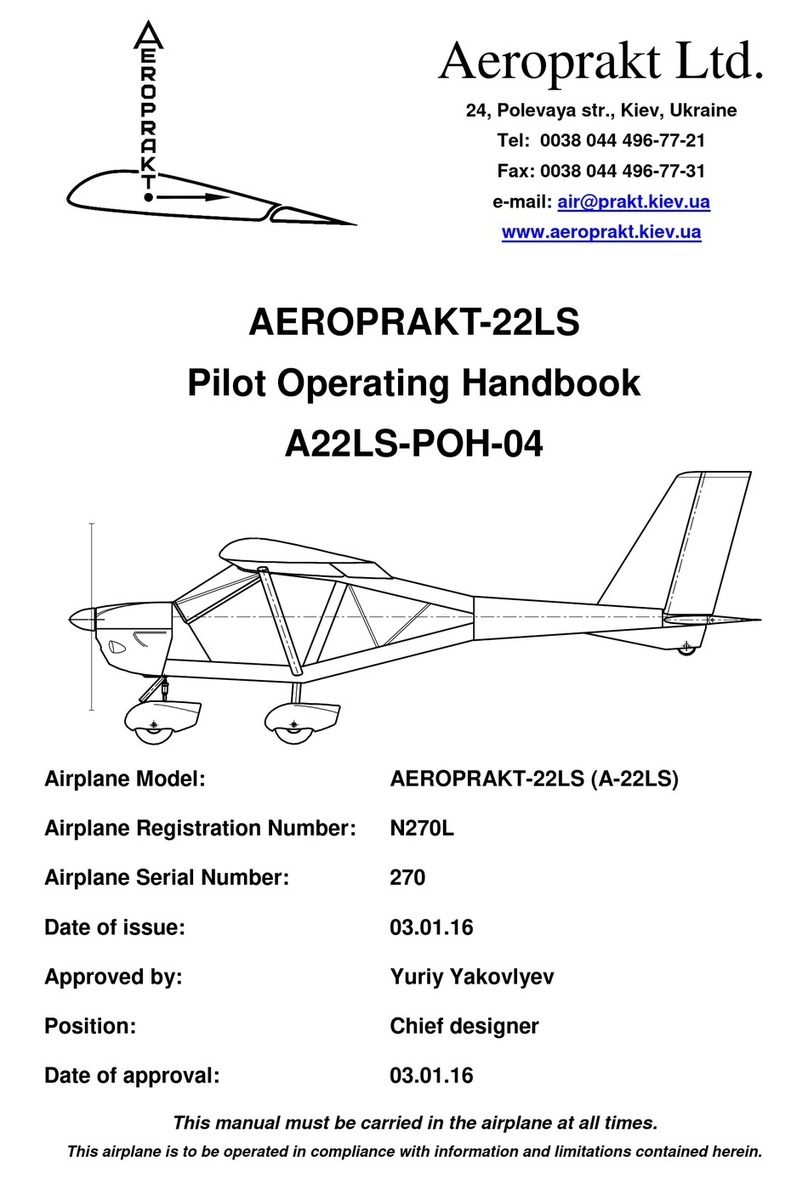
AEROPRAKT
AEROPRAKT A22LS-POH-04 Owner's manual

AEROPRAKT
AEROPRAKT AEROPRAKT-32 User manual

AEROPRAKT
AEROPRAKT AEROPRAKT-32 Owner's manual
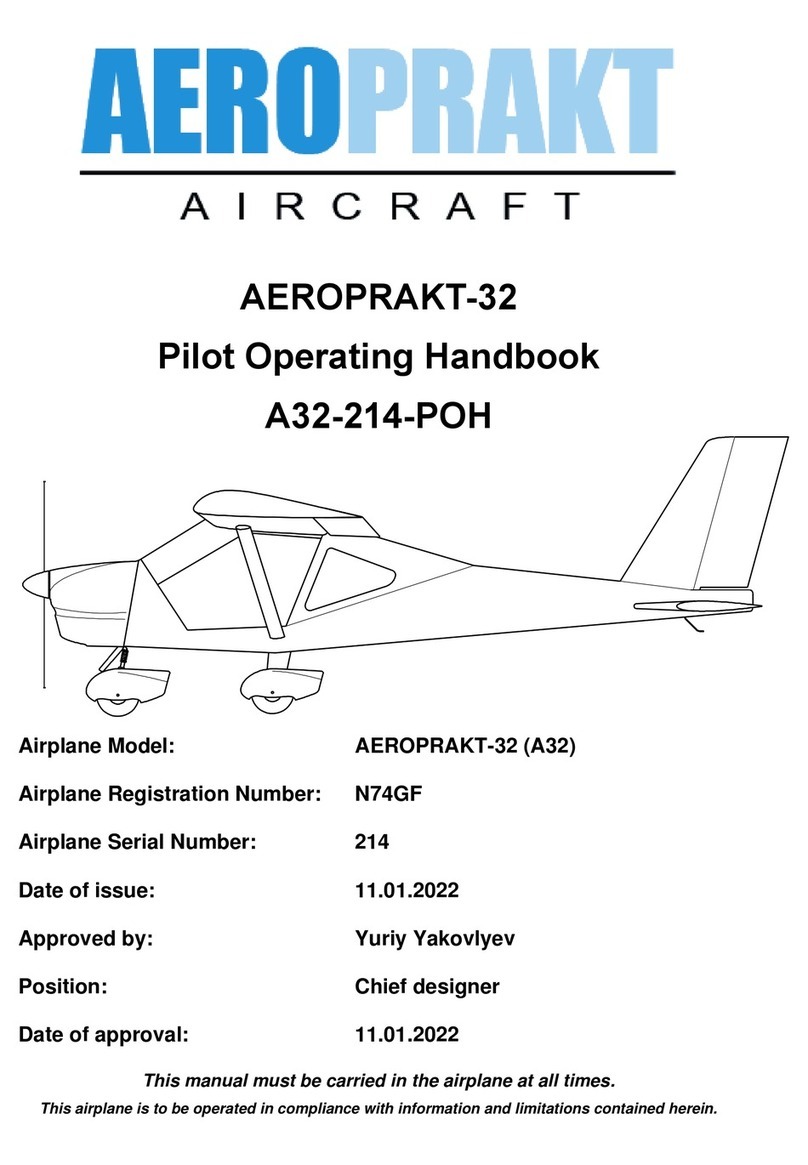
AEROPRAKT
AEROPRAKT A32-214-POH Owner's manual
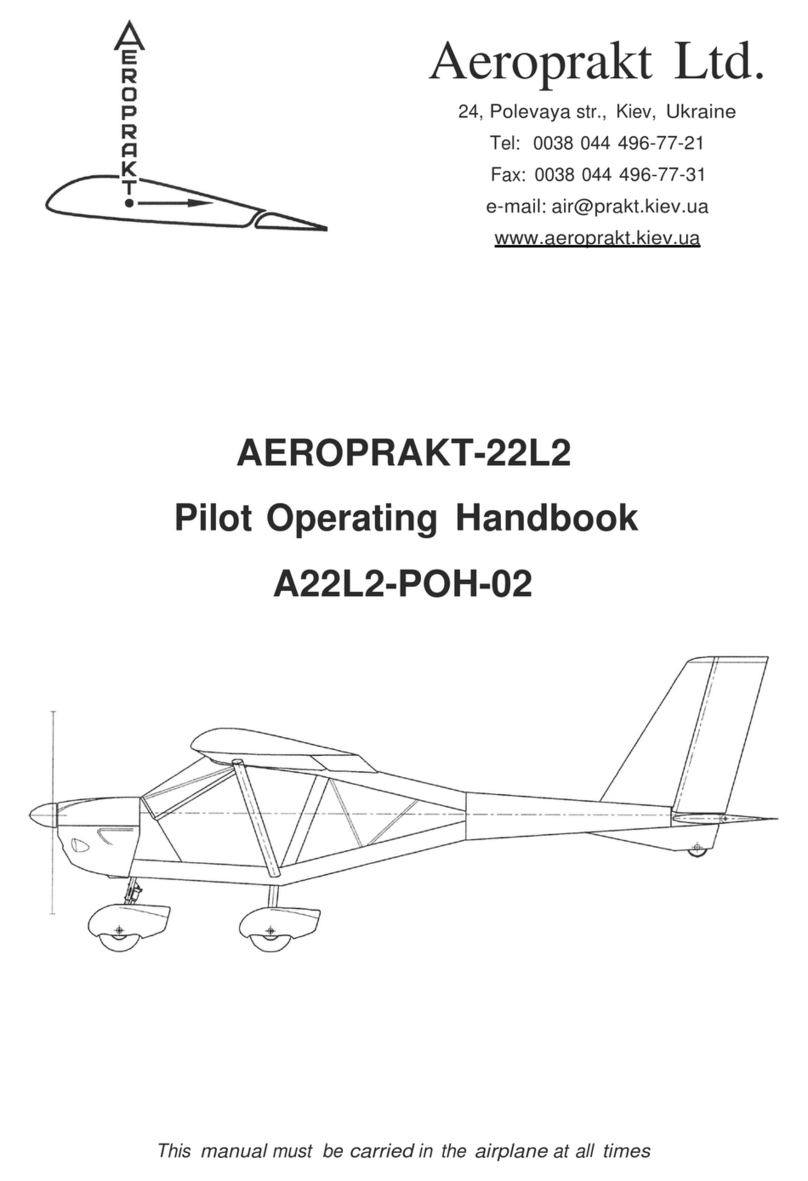
AEROPRAKT
AEROPRAKT AEROPRAKT-22L2 Owner's manual
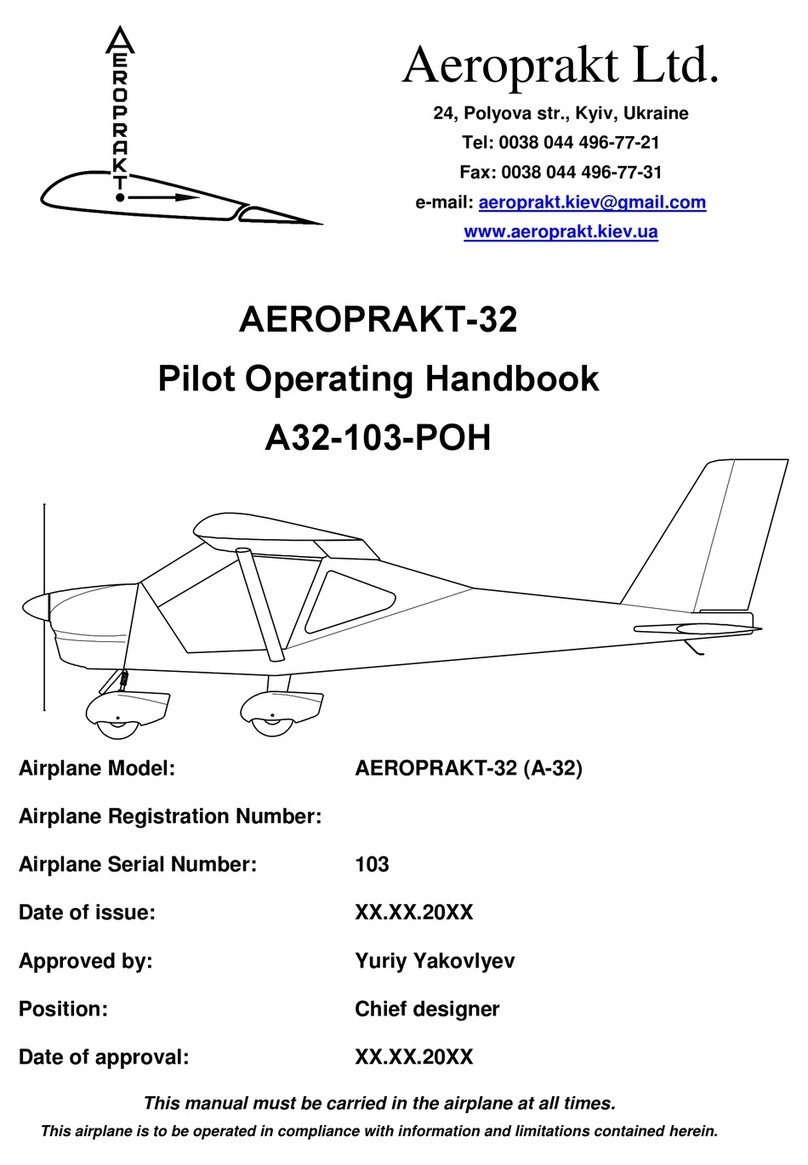
AEROPRAKT
AEROPRAKT A32-103-POH Owner's manual

AEROPRAKT
AEROPRAKT A32-029-POH Owner's manual
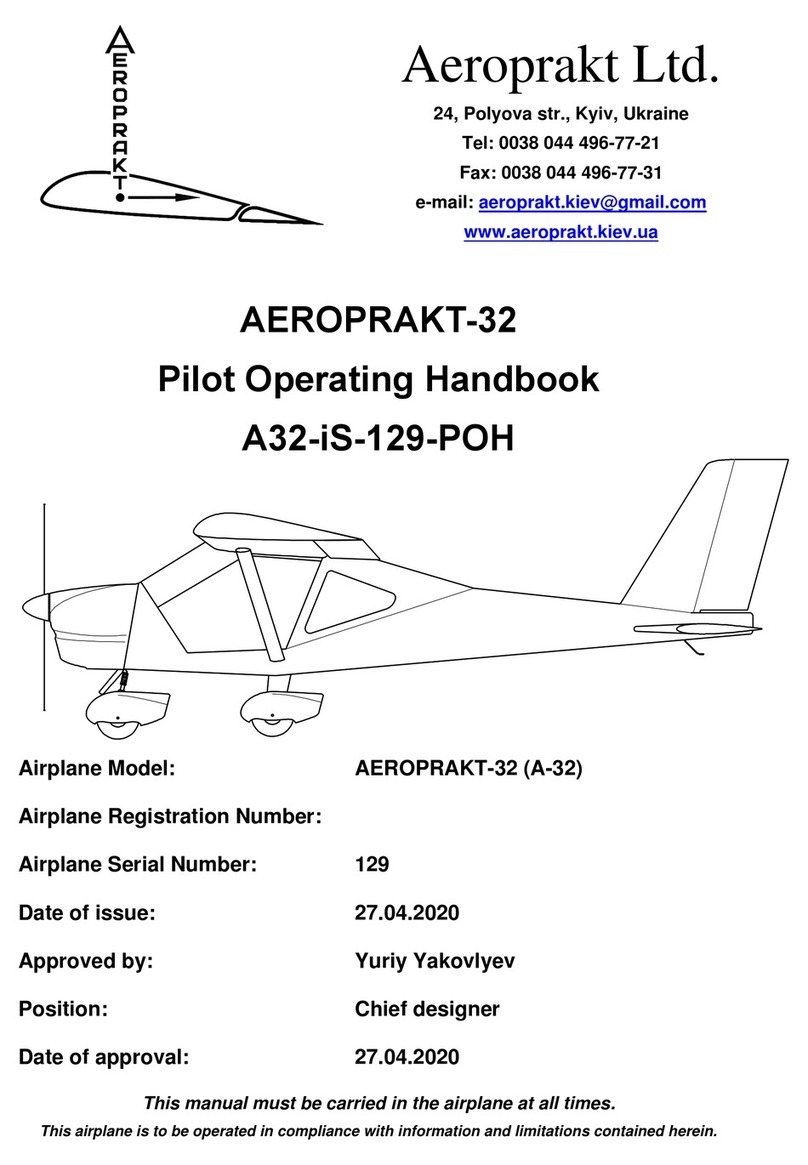
AEROPRAKT
AEROPRAKT A32-iS-129-POH Owner's manual

AEROPRAKT
AEROPRAKT 22LS Owner's manual
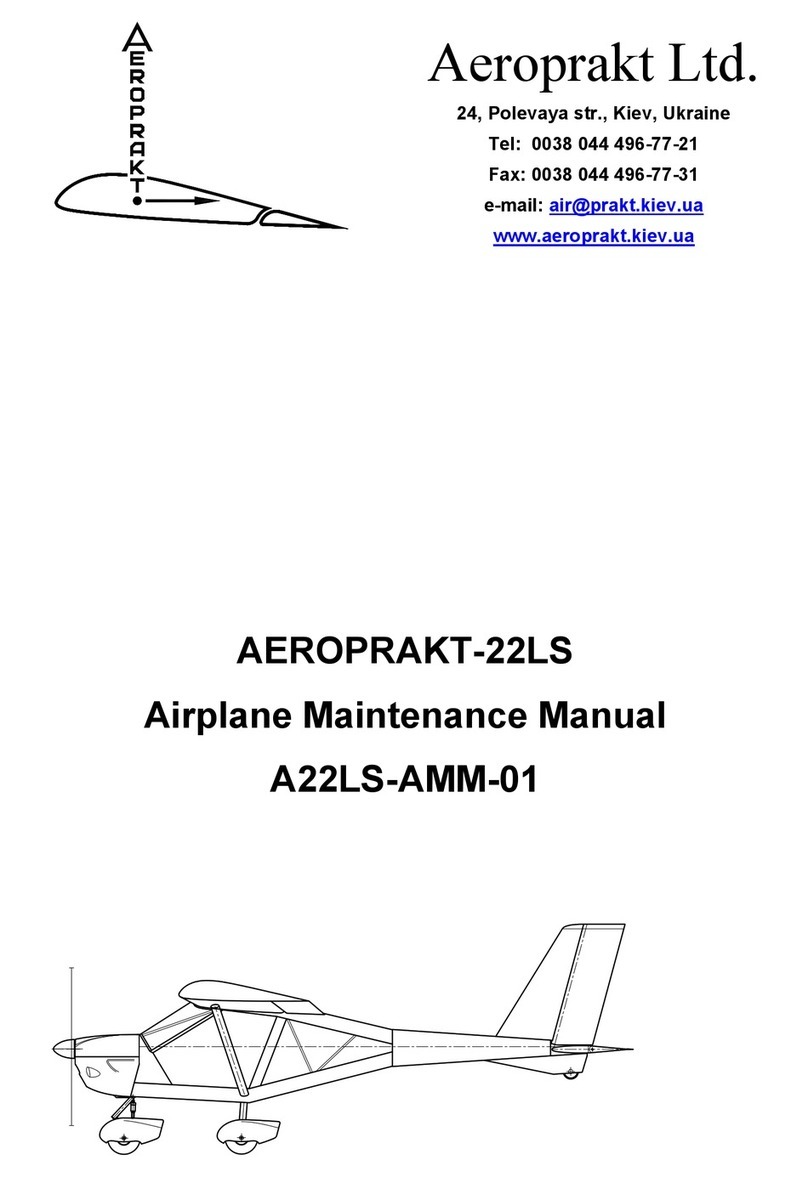
AEROPRAKT
AEROPRAKT A22LS User manual
